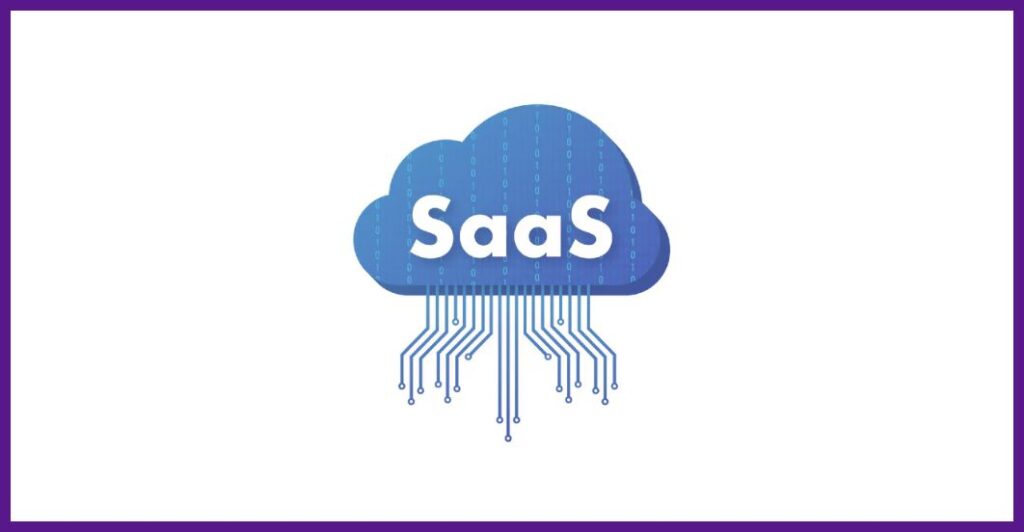Over the years, consumers have changed the way they consume. Today, the service model is used in many business sectors, and software is no different. But before we talk about SaaS (Software as a Service), what is the service model?
When we need to get somewhere, we just need to pick up our cell phone and order an Uber. Within a few minutes, we will arrive at our desired location. What's more, we don't need to worry about parking, paying vehicle taxes, paying maintenance, etc. With this practical example, we can understand how services have attracted thousands of consumers to their model, since they objectively deliver to the customer their desires or needs.
Services by their nature aim to earn remuneration through value delivery to the customer, shortening the path to their goal. As a result of this model, companies hire the service model for many functions and thus are able to meet their needs. Such as security, marketing, tax teams and others. Long live service providers! SaaS? How does this model work?
As Software could not be left out of this global trend, the concept of Software as a Service (Software as a Service) or as it is popularly known SaaS emerged.
SaaS is a sales & distribution model for accessing software through the payment of a monthly subscription. This subscription (license to use), while active, will guarantee the right to use (access) the software. If the customer does not wish to use the application, they simply need to cancel the subscription in the manufacturer's administration center. This way, you cancel your access to the software/service and reduce the recurring payment for the application.
Another very important point when we talk about the SaaS model is that when we subscribe to software we are only subscribing to the final application, that is, the entire IT infrastructure, servers, updates and maintenance of the servers are the responsibility of the manufacturer, providing greater focus on what matters, using the application!

SaaS offers:
Software Upgrade
If the manufacturer updates the Software during your subscription period, you will be entitled to use the newest version. In most cases, this update occurs automatically without generating operational costs for the IT team, after all, the application is stored in the cloud.
Rapid implementation
Since the application infrastructure is the manufacturer's responsibility, the client does not need to implement servers and other resources within its infrastructure. The end user, with their credentials, quickly accesses and uses the application.
Low Initial Cost
The SaaS billing model allows the initial costs of the application to be paid in an economical and assertive manner. By assigning the software license to some users, it is possible to analyze whether the SaaS solution is compatible with the business model, thus avoiding operational costs for the IT team.
On-Demand Software
If the customer no longer wishes to use the application, they can simply cancel their subscription in the administration center and this way you will optimize monthly revenue. With well-defined processes, we optimize the use of subscriptions for users who actually use the application and the correct version/edition.
Centralized Management
SaaS applications have a centralized portal (tenant) where we manage all users with active subscriptions, we can quickly request new licenses, reallocate, cancel and perform other administration tasks.
Popular SaaS Applications & Companies
Software from different segments is available in the SaaS model, adding value and solving problems. We can highlight:
- Office 365 – Microsoft – Productivity Apps
- Creative Cloud – Adobe – Creation Applications
- Salesforce – Sales Force – CRM Platform
- Netflix – Netflix – Video Streaming
- Dropbox – Dropbox – File Storage and Sharing
- Spotify – Spotify – Audio Streaming
- Autodesk – Architecture and Engineering
Example of SaaS companies in Brazil:
- RD Station – Applications for Inbound Marketing
- RunRun.it – Project Management App
- Lilu – App for pet services at home
You have certainly used or heard of one of these applications, the growing number of users of these tools increasingly reinforces the trend of this software model.
How to manage SaaS applications?
The ease of SaaS implementation has led to a significant increase in the frequency of contract renewals. Today, it is estimated that large corporations perform more than 15 contract renewals per week. However, SaaS Asset Management teams need to deal with the impact of automatic renewals and underutilized software. In the following article, we will delve into practical steps on how to manage SaaS renewals to make the most of the company's investment.
SaaS Renewal Flow
For an efficient renewal we must understand that all SaaS contracts have a life cycle, this life cycle is divided into 3 stages:
- Registration: At this stage we will map key criteria that will be used in the renewal of the contract.
- Management: In this stage the following will be carried out: active monitoring of the use of Software.
- Renewal: At this stage, we will use the information collected in the monitoring phase to carry out an efficient renewal.
1. Registration
The registration stage begins as soon as the contract or subscription is purchased by the organization. Ensure the engagement of the person responsible for the purchase, as this will allow us to register key information more quickly.
Key information for registration:
- Application Name: What is the name of the application?
- Usage Rights: How many users, assets, computers or devices will be able to use the application within the park? To reach this rationale, it is important to identify the Software metric.
- Values: Identify the total cost of the contract and the unit cost of each license. With this information, the team will build a prioritization order for the renewal flow and will act more efficiently in sizing the budget.
- Relevant dates: Registering dates is crucial for planning renewals, so your team can create a calendar, predict peak periods and plan actions.
- Additional Terms: If applicable, add additional terms to your contract in the registration, such as grace periods, advance notice of contract cancellation, minimum conditions, among others.
- Application Usage: Who uses the application? What is the functionality and category of the software? How critical is it to the business?
- Responsible: Who is responsible for the application?
- Manufacturer: Is it a strategic partner for the company? What contract models does the manufacturer offer?
2. Management
Once we have registered SaaS within the organization, it is necessary to focus on tracking software usage. In this new stage, we must monitor the development of the application within the organization, information about the use of the application and its features to determine the volume for the next renewal, if we identify that users use few features we can look at a leaner subscription for the product, if the application is being used little we can renew different quantities of the product. SaaS providers charge renewals based on software usage, if you know your organization's usage trend, it is a great opportunity to reap the rewards of your management.
Another important process during the management stage is the Usage Review , this process identifies why some employees do not use the software or use it very little. Does the user use another solution? Is training required to use the Software? Is the Software not compatible with your needs? Can we continue with the non-renewal of this license?
Key information for Management is:
- Active Users: Who uses the application? How long has the application been used?
- Inactive Users: Who does not use the application? Who owns this license? Do we have a schedule to perform the Usage Review?
- Features Used: Which features are used? Which key features (that change the license profile) are used?
- Available Licenses: What licenses are available? How many licenses are available?
- Alternative Solutions: Are users already using any alternative solution for that Software? Should we consider the alternative solution for renewal?
3. Renewal
Now that we have all the key information for an efficient renewal, let's go through the standard process of every SaaS renewal. Using the information acquired, we will first questions about renewal:
- What do we own?
- What are we using?
- What do we need?
- What will be the scope of the renewal?
- What are the goals of this scope?
Companies have many weekly renewals and it clearly does not generate good cost-benefit for a team SAM manage all of an organization's SaaS renewals. Today, there are platforms on the market such as ServiceNow It is Snow Software who do this management, but just having a platform is not enough.
We will then determine criteria to identify where the SAM team should get involved. These criteria should include:
- Contract value
- Criticality for the business
The most valuable contracts deserve your attention, as well as contracts that are critical to the organization. The team will increasingly improve the efficient renewal process and make deliveries faster, thus opening up room for analysis of other contracts. At this stage, renewal schedule will be your greatest ally, so it will be possible to identify renewals in which the team SAM will have time to add value.
With the scope and goals defined, the next step is to contact the reseller or manufacturer to begin the renewal process. By starting the renewal process early, you will have more time to negotiate with the supplier and they will have time to study how they will meet their commercial goals with you or another client. Building a partnership with the SaaS provider is important, as you do not have the option to stop purchasing the software. In SaaS software, if you do not pay, you lose full access to the SaaS solution.
Understanding the manufacturer
When negotiating it is important to understand the key success metrics from the manufacturer. SaaS providers usually have well-defined metrics, know your partner and don't forget to use metrics to your advantage. Models of metrics:
- Renewal Rate
- Contract and customer retention
- Customer Success
- Customer Lifetime value (CLV) rate
- Churn Rate or Rejection Rate
Example of trading using metrics:
If you have analyzed the data collected in the Registration & Management stage and identified that software adoption is high and will increase over the next 3 years, negotiate this deadline with the SaaS partner. With this negotiation, you will help the seller with their metrics and will undoubtedly have greater flexibility in pricing.
The art of negotiation is to achieve a win-win situation, and in this case you have achieved it. You have reached a low cost per license agreement that will grow with the organization and that meets all of the manufacturer's metrics used in the contract. model previous.
Conclusion
This article aimed to: In its first stage, demystify the concept of SaaS with a conceptual and introductory approach and then present advanced techniques for teams that need to manage this asset.
Mastering the SaaS renewal process is another step towards achieving SAM maturity and, as with all SAM, we must reinforce the 3Ps: Processes, People and Platforms. With the 3Ps aligned, we will have effective information collection, processes that impact the organization and specialized technical staff to carry out all necessary routines and rituals. MattZero can assist you in all SaaS management. consult our experts.
Did you like this content and are you interested in Software and Technology Management? Visit our website blog.





